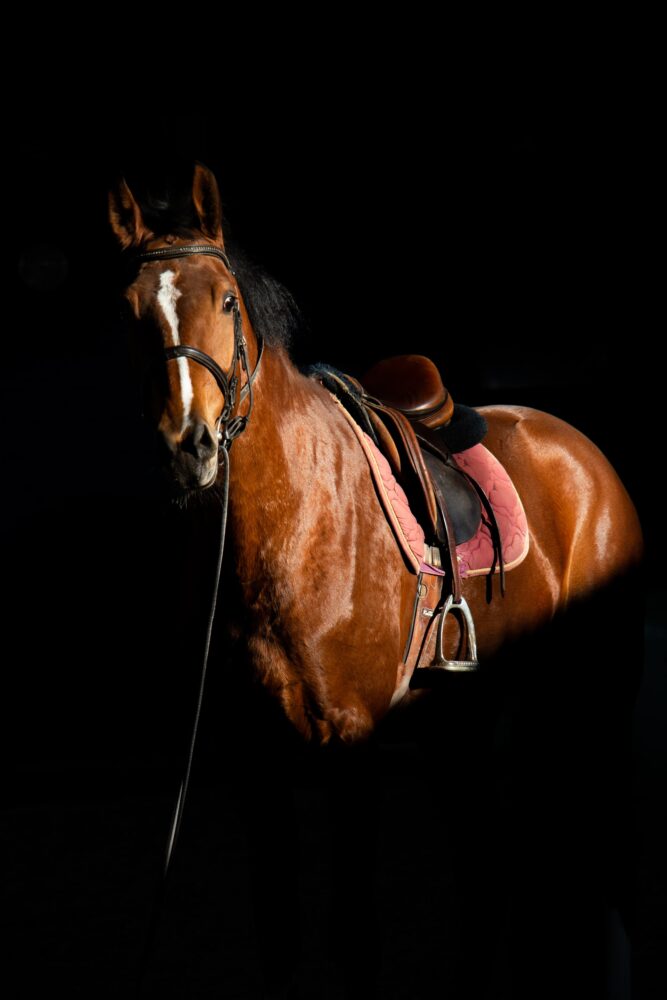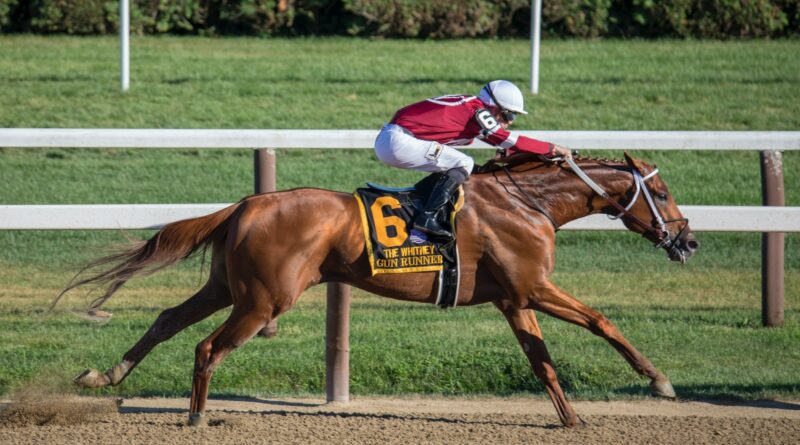The best horse breeds for horse racing
Horses are beautiful and graceful animals. However, it is not so much the appearance of the stud which matters when choosing a racehorse, but its speed. It has repeatedly been proven that the fastest horses in the world are thoroughbreds. This article points out the fastest breeds and their record holders.
There are breeds that are comparable to a typhoon in speed. And many of them have been bred thanks to a passion for horse racing. Today, thoroughbreds are considered the best of their kind. Other racing breeds, such as the Terek, Budennovsk and Akhal-Teke, are used for the race of the same type and for regional competitions.
The races are not only about winning the prize or playing the sweepstakes. One of the main objectives of the races is to determine the best of the breed. They subsequently receive not only worldwide recognition, but also continue the family tree.
Racehorses
There are a large number of horse breeds known to humans. They differ considerably in character and anatomy from horses that are used for heavy work. Different breeds of horse are used in different ways: some for racing, others for walking.
There are two main types of horse riding breeds:
- Breed for walking: Good-natured, obedient and graceful – these horses are best suited for quiet walking rides. They can also be used occasionally in the training of beginners in equestrian sports.
- Sport Runners: These are horses designed for sport racing. Their character is quite the opposite of the first kind. They are brash and proud, strong and stubborn, brisk and impulsive – all these characteristics combine in a sports horse. Such horses are not suited to quiet summer or spring rides. They need drive and constant exertion.
All riding horses share the same anatomical traits. They have broad, strong backs (in order to carry the load), muscular shoulders, and good build. And of course they have a great tail and an incredible mane. Riding horses are about 165 cm at the withers. Their stamina, patience, and sparkling beauty make them unique and special among all other breeds.
Thoroughbred riding horse
The thoroughbred has been bred through centuries of breeding. The best Arabian and Persian stallions and mares from royal stables were used. The original name of the breed was English Thoroughbred. But following the widespread popularity of horse racing in the 19th century, improvements in the breed were carried out all over the world. Since then, they have carried the breed name Thoroughbred.
Horses that are purebred have fiery impetuous nature and unrivalled agility. Over long and short distances they show no equal, only they can cross 1000 m in 60 seconds. That’s why the World Cup is contested exclusively against this breed.
The English racehorse breed is also known as ‘Bred to perfection’.
Purebred racehorses are not noted for their high stature or outstanding exterior, and are most often of a bay and red mast.
The characteristic traits of the appearance are:
- a well-proportioned, muscular and large body;
- lack of thick hair;
- thin skin with capillaries and muscles in relief;
- strong ribcage;
- average height, usually no more than 165 cm at the withers and 153 to 163 cm at the waist.
Originally bred for cavalry, over years of careful breeding, thoroughbreds have developed into the ideal species for running and speed development. No wonder this breed has the most wins in equestrian sport.

Arabian thoroughbred horse
The blood of eastern ancestors flows in all horse breeds. The Middle East has largely laid the foundations of horse breeding, horse training and dressage, domestication and breeding methods.
From other thoroughbred racehorses the Arabian is distinguished by grace and perfection of movement.
Appearance characteristic:
- Athletic dry build;
- Small head and narrow muzzle;
- arched neck;
- short stature, up to 155 cm;
- Elegant exterior, predominantly red, sorrel or grey in colour.
Although Arabian horses are particularly hardy and fast, the equestrian sport is still dominated by thoroughbreds. Today, Arabian horses are most often bred for show jumping.
Among the most popular types of Arabian horses are the Sihlawi, the Khoheylan, the Hadban, and the Sihlawi. Each of these types has earned recognition and love.
- Siglavi is built more gracefully and harmoniously than Cochlaines but is less successful at racing.
- The large and powerful Kochelaines are unpretentious, strong and hardy.
- Khadbans show themselves excellently in races. They are distinguished by their big stature, strong muscle mass and great endurance.
- Koh Keylan-Siglawi is a thoroughbred that has evolved from the best running qualities of the Siglawi and the Koh Kehlawi. The Koh Keylan Seaglawi is beautifully built, fast and hardy.
The purity of Arabian horses’ blood was very much protected in the Orient. The sale of horses of this breed to non-believers was punishable by death.
Akhal-Teke horse
The Akhal-Teke is a war horse bred by desert nomads. Today, their blood flows in the veins of the purebred.
They are distinguished by their special endurance, which allows them to survive in the harsh conditions of the desert when water is scarce. They are graceful and thin-skinned in appearance, but also very strong. Most often, Akhal-Teke horses take part in long-distance races.
The oldest breed of horse, kept pure by isolation from the rest of the world in a tiny oasis called Akhal.
The Akhal-Teke’s stride is smooth, so they are comfortable to ride.
Appearance characteristic:
- dry slender build;
- tall and long legs;
- small head;
- graceful neck line and narrow chest;
- thin skin with translucent capillaries;
- the mast has a distinctive silver or golden hue.
The nomads raised these horses not just as war horses, but as members of the family. They shared a meal and shelter with them, and they were surrounded with care and affection from a young age. That’s why Akhal-Teke horses are famous as an unusually proud and willful breed of horse, which recognizes only one owner. Not everyone can cope with their complex, nervous and vindictive nature.
Trakehner horse
It is a breed bred in Germany in the 18th century for sport. Their calm character and rhythmic movements have made them popular all over the world and they excel in sport. In the 1960s, the decision was made to finally convert this breed from cavalry to sporting breed. Since then, interest in the breed has grown considerably in other European countries and even in the USA. Previously, the breed has proved itself very well in various types of riding, such as dressage, showjumping and triathlon.
Trakehner horse characteristics:
- height at withers varies from 164 to 194 cm;
- beautifully shaped head with an upright profile and large eyes;
- long neck which flows gracefully into a reasonably broad and straight back;
- strong legs with strong hooves.
- brown, red, caraca, sorrel and crow are the most common in mast.
Hanoverian horse
A well-known sporting breed in the world. High stature, muscular legs, broad back, strong body help to reach the top in equestrian sport. The distinctive features are power, agility, and the ability to make good jumps. The horse has a persistent balanced temperament and obeys all commands clearly. Because of this, it is known as a repeat winner in international competitions.
Appearance characteristic:
- medium sized head, with large eyes and good big ganache;
- long graceful neck and long sloping shoulders with pronounced withers;
- strong deep body, muscular croup with well set tail;
- muscular legs with big well defined joints;
- 160-175 cm high at withers;
- the colour is mainly bluish, dark bay, crow’s-feet and less often red.
The stallions are of excellent form and excellent movement and show excellent results in classical (Olympic) equestrian sports. The modern Hanoverian is very refined and has a good temperament.
The fastest horses in history
In the shorter distances this ranking has remained unchanged for a long time, but just 14 years ago a new champion was found.
- 1st place. The mare Winnin Bru. At the race in the USA in the spring of 2008 she was 70.76 km/h. That is an all-time record. Distance of the race was 402.4 m.
- 2nd place. English stallion Beach Reckitt. In 1945 on the same short distance of 402.4 m he showed 69.7 km/h. A member of the same breed, Onion Roll, repeated his achievement nearly 50 years later in 1993, but could not overtake.
- 3rd place. The stallion Siglevy Slave. His speed was 69.3 km/h and the distance was 804.8m. It should be noted that the stallion was running without a jockey, which is, of course, a little bit easier during the record-setting.
The winner of the long distance race is the thoroughbred horse Haukaster. In the 2414m run, he reached a speed of 60.86km/h.

